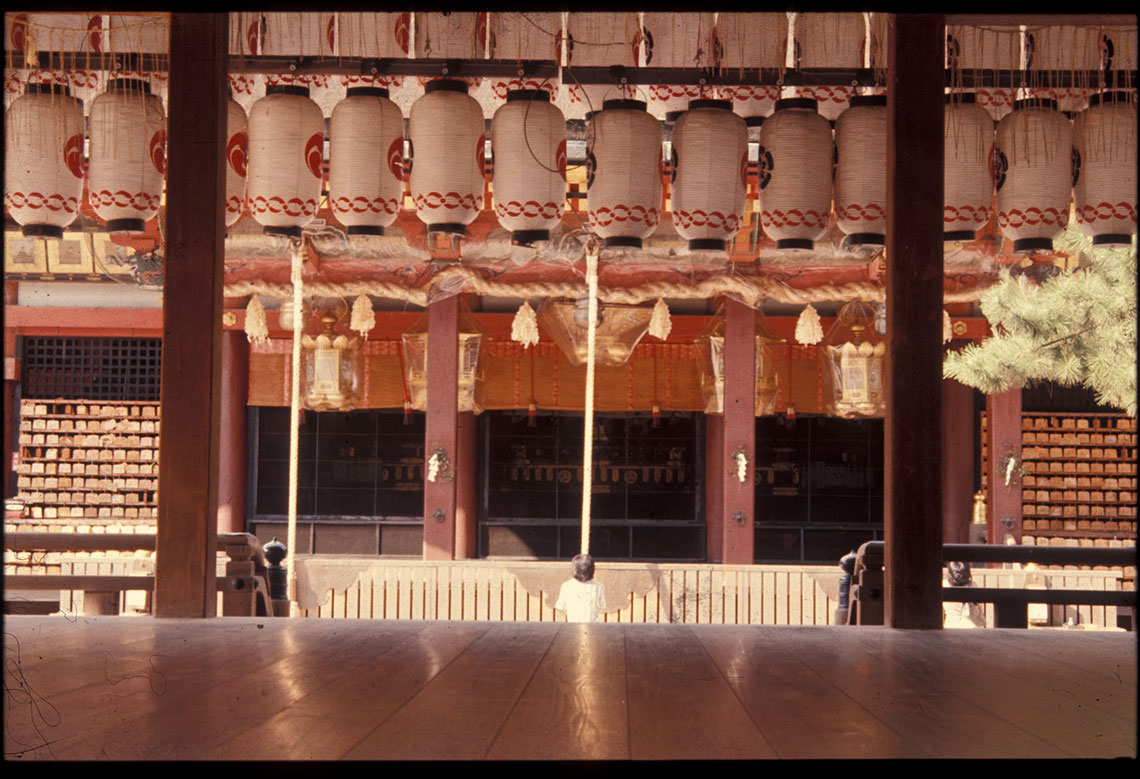The journey through the woodland from Saito to Hosokute is broken from time to time by the sudden appearance of a small, ancient hamlet. They provide a welcome opportunity for a brief rest and the villagers, if anyone is around, are more than willing to stop their work awhile for a bit of idle conversation. At the small village of Saito the traveler may well be surprised to be asked whether or not he is a Christian. Whatever the answer an opening has been provided for the villager to tell a story which only came to light in recent years.
Some years ago a villager was walking in the woods and came across a small stone with the symbol of the cross carved on it. Over the next few months a number of similar stones were found, all in this general locality. Further investigation revealed that some of the gravestones in the ancestral burial grounds had crosses carved on their bases, or in other places not easily seen. One of the stones carved with what appeared to be a Japanese guardian deity was found, on closer inspection, to have really represented the Madonna and Child. The villagers, apparently, had no idea that their ancestors of some 400 years ago had once been active Christians.
The origins of Christianity here go back to the time when Oda Nobunaga moved his base to Gifu in 1564. He welcomed the Portuguese missionaries who soon arrived at his court, and allowed them complete freedom to seek converts within his domains, including the area near Mitake. After Nobunaga’s successor, Toyotomi Hideyoshi, banned the religion in 1597 many were forced to give up their new faith. Others, however, particularly those living in the more remote places, were able to carry on practicing their faith in secret. As the laws forbidding Christianity became stricter, especially during the shogunate of Tokugawa Iemitsu (1603-1651), and as the punishments became even harsher, it seems that the faith could no longer survive here. Remote though this area is, its proximity to a major highway like the Nakasendo meant no-one could maintain a secret faith without discovery for long. The hidden crosses and other symbols of the faith, however, attest to the attempt at survival here of Christianity, at least through the first years of prohibition.
Passing through these hamlets, the old Nakasendo crosses only a few short sections of paved roads. For most of the way the journey to Hosokute is along narrow pathways through the woods. Many relics of the old highway remain, including frequent stone images of the protective deities for travelers and horses. The route is steadily uphill until, at 1200 feet above sea-level, and some seven and a half miles from Mitake, Hosokute is finally reached.
Just before reaching Hosokute there is a row of small houses squeezed between the hill and the road. Sitting in one of them there is often a retired farm laborer who now sits doing piecework for local factories. He occasionally glances across the valley, taking a break from putting handles on cheese knives at one yen apiece, but he is happy to chat with passersby as he works though his 700-per-day quota.
Hosokute stretches up a single street in the fashion of an old post-town, but the only building that recalls its old function is the Daikokuya inn. Another older building was a burnt-out frame in the summer of 1992. Swallows swoop into the inn’s entrance to nest in the rafters; the inn keeper spreads newspaper on the earthen floor to pick up their droppings.

Daikokuya inn


